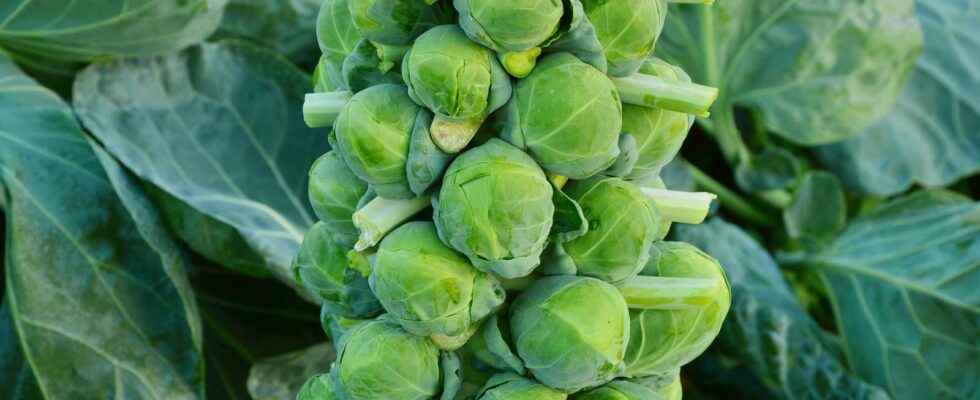These miniature, very green, little headed cabbages are too little cultivated in vegetable gardens and too little cooked on the plates. Like many others cabbage, they are harvested from September to March. Their delicate and sweet flesh invites itself into invigorating winter dishes. Too often a bad memory of the canteen, rediscover Brussels sprouts!
Brussels sprout season
the Brussels sprouts (Brassica oleracea var. gemmifera) is a leaf vegetable native to Belgium that belongs to the Brassicaceae family (Brassicaceae). We sow them in the shelter between February and May or we plant the feet directly in the vegetable garden from April to June. The foot forms a long main stem on which large leaves develop, with leaf axils in the axils of the leaves. small apples called Brussels sprouts. Allow about seven months between sowing and harvesting, which is done from the bottom up, on the main stem. Late varieties, more hardy, need an episode of gel to improve the taste qualities of Brussels sprouts.
Nutritional qualities of Brussels sprouts
Brussels sprouts are low in calories, they represent only 45 kcal per 100 grams. They are rich in vitamins C, in minerals and fiber.
The varieties of Brussels sprouts
There are early varieties to harvest between September and November then late varieties to harvest between November and March. You can space out the harvests of small headed cabbages, from September to March, by mixing different varieties, of which here are a few examples:
- ‘De Rosny’: small gray-green apples;
- ‘Demi-nain de la Halle’: small green cabbages;
- ‘Diablo F1’: small green apples;
- ‘Jade Cross’: medium sized green cabbage;
- ‘Igor F1’: medium sized green cabbage;
- ‘Sanda’: large apples with purplish green foliage, resistant to severe frost;
- ‘Groninger’: small, very green apples.
Here are some original and decorative varieties:
- ‘Red Bull’: purple apples;
- ‘Rubine Red’: purple apples, like red cabbage;
- ‘Redarling F1’; Brussels sprouts of purple color.
Preserving and cooking Brussels sprouts
Once harvested or purchased, keep them for about seven days in the crisper at the bottom of the fridge. To prepare them, simply remove the first leaves, sometimes damaged or slightly withered and soak them in vinegar water to remove any insects hidden. To freeze them, you must blanch them in boiling water, between three and five minutes. Brussels sprouts can only be eaten cooked, hot or cold. They are often served as an accompaniment to meat or fish. Also cook them as a fresh autumn or winter salad with potatoes and cold meat. Another recipe, add a few hazelnuts or slivered almonds to a pan of Brussels sprouts to add a touch of originality. You can also enjoy them in a gratin or in a quiche. They have their place in a broth or a soup that warms up in winter.
You will also be interested
Interested in what you just read?
.
fs12
